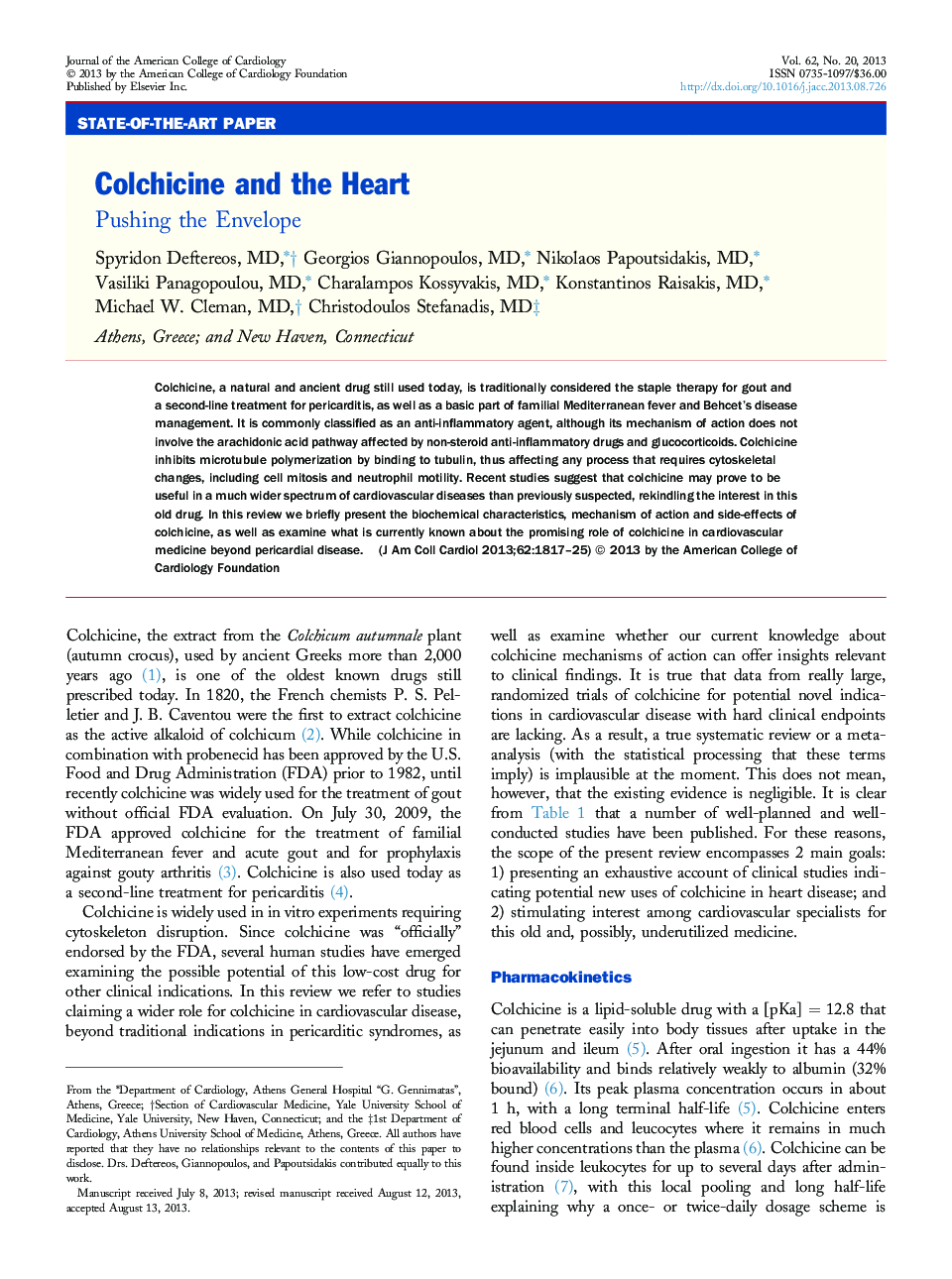| کد مقاله | کد نشریه | سال انتشار | مقاله انگلیسی | نسخه تمام متن |
|---|---|---|---|---|
| 2946626 | 1577130 | 2013 | 9 صفحه PDF | دانلود رایگان |

Colchicine, a natural and ancient drug still used today, is traditionally considered the staple therapy for gout and a second-line treatment for pericarditis, as well as a basic part of familial Mediterranean fever and Behcet's disease management. It is commonly classified as an anti-inflammatory agent, although its mechanism of action does not involve the arachidonic acid pathway affected by non-steroid anti-inflammatory drugs and glucocorticoids. Colchicine inhibits microtubule polymerization by binding to tubulin, thus affecting any process that requires cytoskeletal changes, including cell mitosis and neutrophil motility. Recent studies suggest that colchicine may prove to be useful in a much wider spectrum of cardiovascular diseases than previously suspected, rekindling the interest in this old drug. In this review we briefly present the biochemical characteristics, mechanism of action and side-effects of colchicine, as well as examine what is currently known about the promising role of colchicine in cardiovascular medicine beyond pericardial disease.
Journal: Journal of the American College of Cardiology - Volume 62, Issue 20, 12 November 2013, Pages 1817–1825